Agapanthus orientalis, lily of the Nile and Osteospermum ecklonis, African daisy are all there is to my Six for this Saturday. Lily of the Nile is in the first three. African daisy is in all but the first. Both are in the second and third. Both are from South Africa. Both have been getting recycled from where they are migrating a bit too much, and getting plugged into more appropriate situations. It is nursery production directly within the landscapes where the finished products are desired. Processing African daisy cuttings and lily of the Nile shoots takes time, but is still less expensive than purchasing nursery stock. They are byproducts of our normal landscape maintenance.
1. Gophers are killing fewer lily of the Nile than they killed last year. I must plug some of the spare shoots from last Saturday here though. Gophers ate the thick rhizomes below.
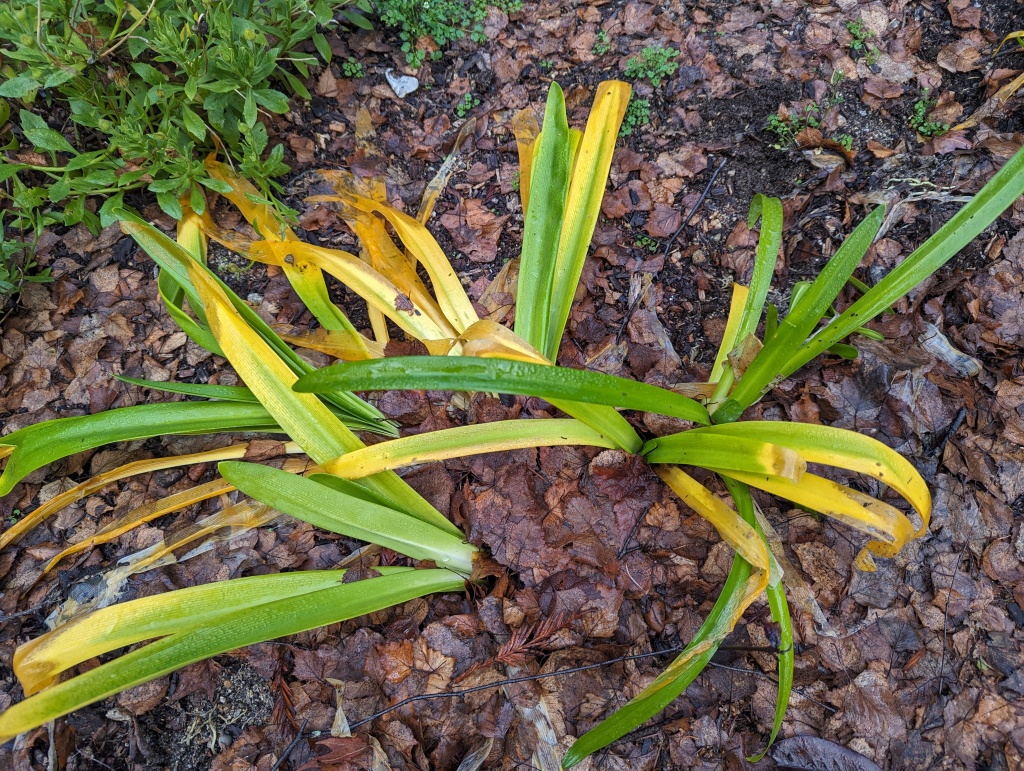
2. African daisy is performing as well as the majority of lily of the Nile in this landscape. It migrates nicely, but also encroaches somewhat into the adjacent row of lily of the Nile.
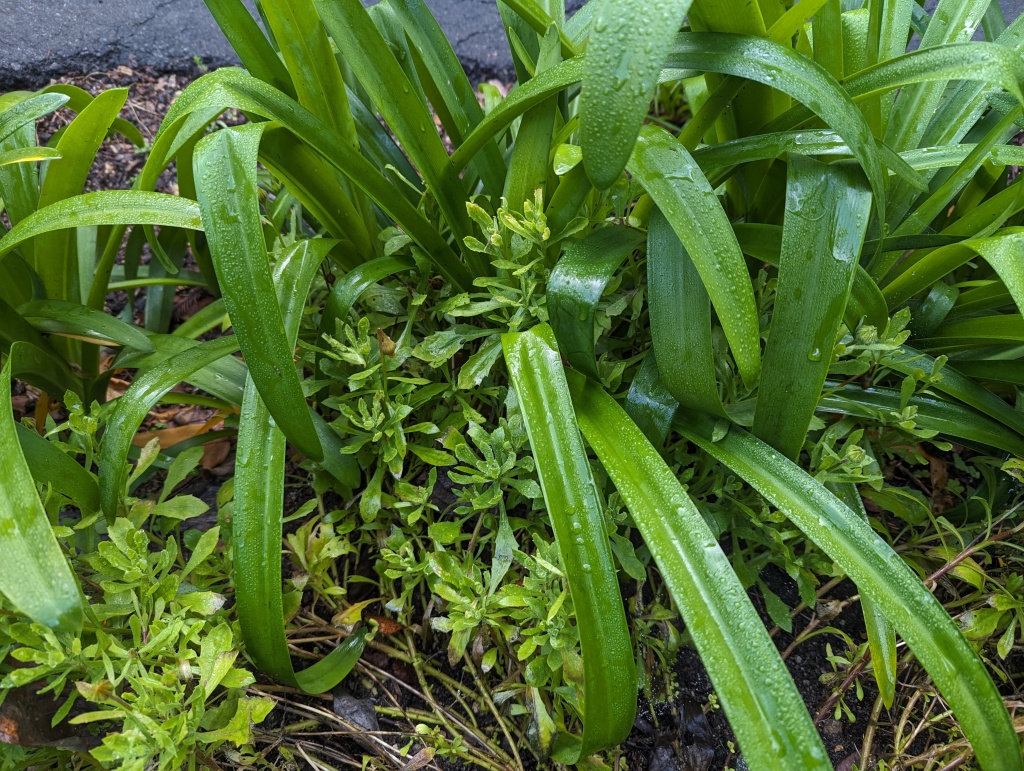
3. Edging is now necessary to separate the African daisy from the lily of the Nile. The lily of the Nile should grow to become too dense for the African daisy to encroach next year.
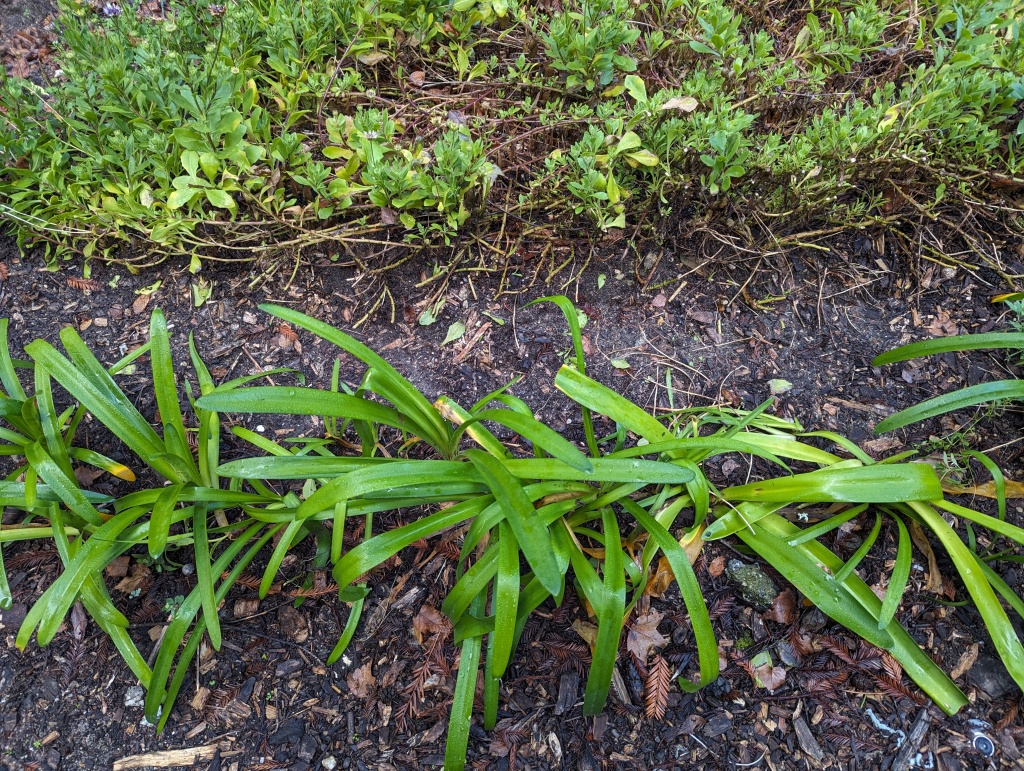
4. Some of the pruning scraps of the African daisy had already developed roots, as if they belong there. Their roots can be useful somewhere else. These scraps became cuttings.
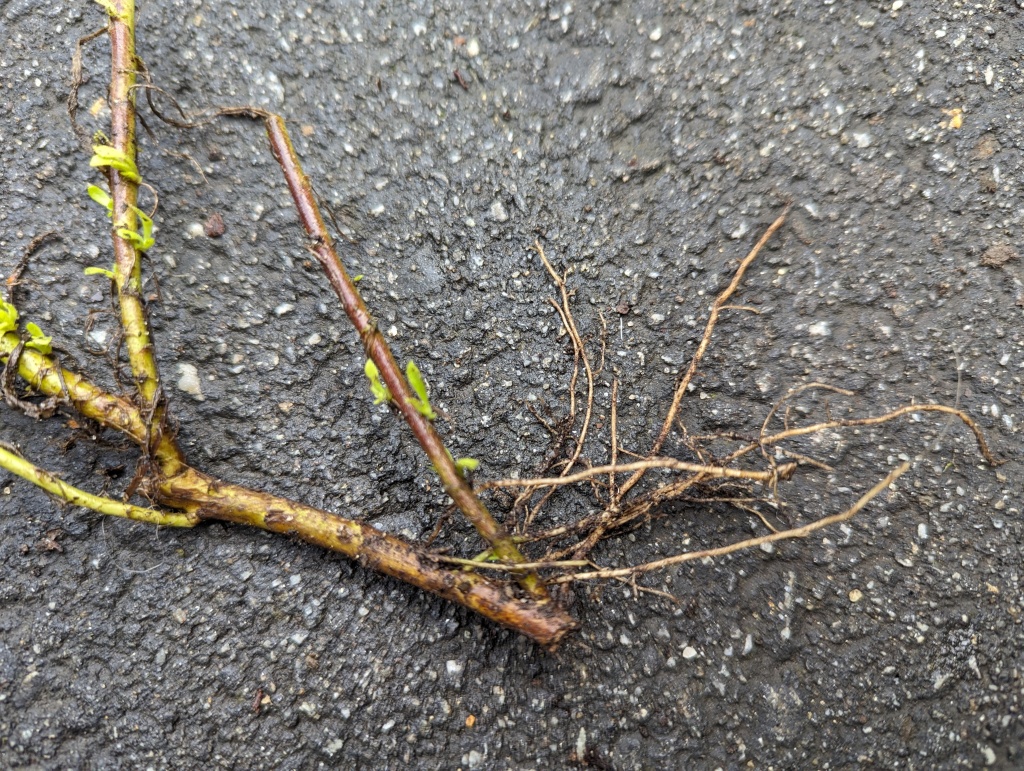
5. Remaining stems are generating axillary growth for this year. We should apply a layer of compost over the stems to hold some against the soil so that they can develop roots.
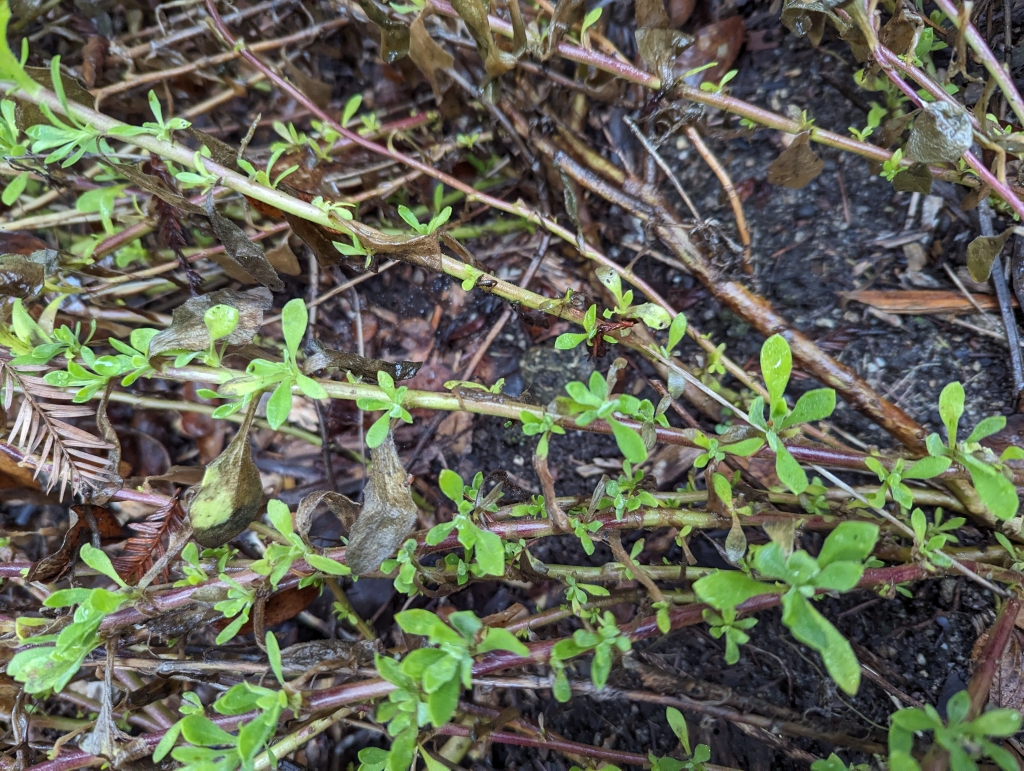
6. Pruning debris from the African daisy was processed into unrooted cuttings that were plugged wherever we wanted more African daisy. They will develop roots prior to spring.
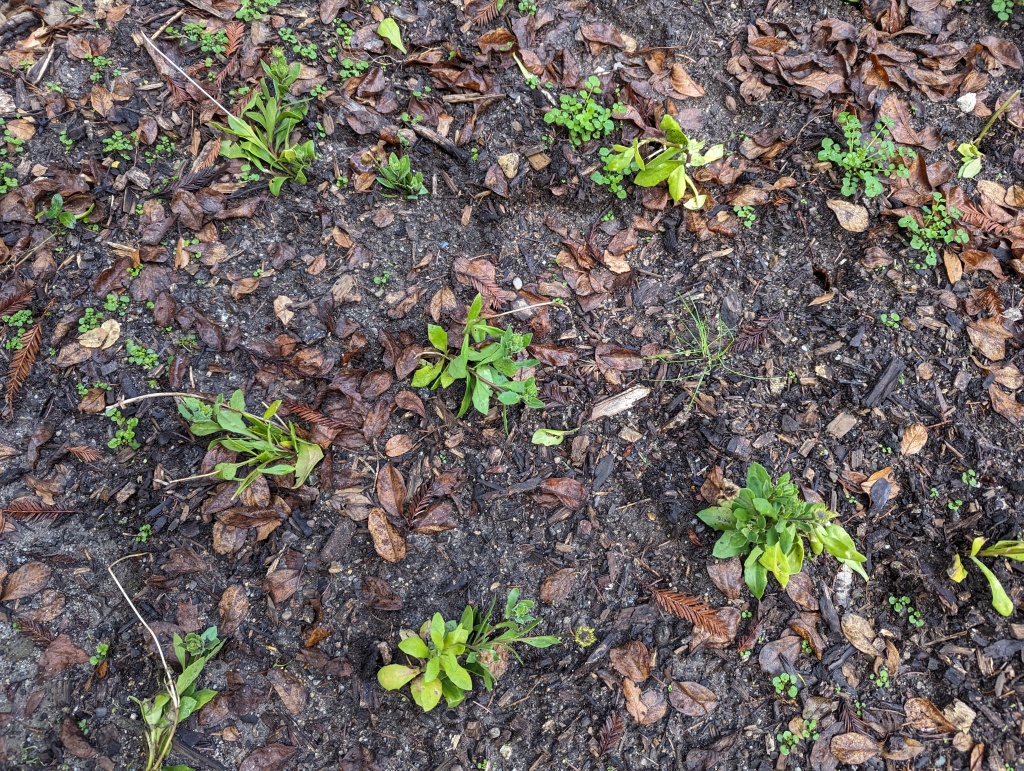
This is the link for Six on Saturday, for anyone else who would like to participate: https://thepropagatorblog.wordpress.com/2017/09/18/six-on-saturday-a-participant-guide/
Great photos showing the real work involved in growing things well!
By the way, Thank you so very much for the box of treasures! I am just overwhelmed. The plants arrived in beautiful condition because they were packaged so nicely. Some actually had new white roots that grew during their journey.
Yesterday was the perfect day to receive them as it was 70+ degrees when they arrived. I have nearly all of them unpacked and potted. There are two bundles of ‘mystery’ Hedychiums still in their wrapping and I have the Khalil ginger healed in (in potting soil in our frost free basement, work area) while I locate the best pot for them. I’ll need to get a fresh bag of potting soil to finish potting them all next week.
You gave me plenty of plants to both grow and to share, and I love sharing plants with others. You will have made a lot of Virginia gardeners happy with your generosity, once I let these little guys grow into their pots, and then begin sharing them in the spring.
My husband is from the West Coast and lived in Hawaii for a time. He knows many of these plants well, and was particularly happy to see the bird of paradise. At least one of the ones you sent should be hardy here- I believe the ‘Fire and Ice.’
It has been a very busy stretch here and so I didn’t get to write for Six on Saturday today. But I took a few photos as I unpacked, and will plan to post something about your plants next week. I believe it is more important to take care of them first, and then write about them later.
With so much appreciation, Elizabeth
LikeLiked by 1 person
It is gratifying to know that the perennials will be enjoyed not only in Virginia, but more specifically in the region of Williamsburg. Once they grow, and multiply, you can leave copies of some of them out over winter to see how they survive. I suspect that most or all will be fine. ‘Fire and Ice’ Heliconia should be as resilient as the Hedychium are, but, also like the Hedychium, it dies back to the ground through winter. It may make the impression of being vulnerable to frost because it does not stay evergreen like it does in the Los Angeles region. Did the sugarcane survive?
LikeLiked by 1 person
Absolutely! It looked beautiful when it came out of the wrappings. You timed the mailing to take advantage of milder weather. I’m really excited about the Heliconia. Plant Delights Nursery in Raleigh carries it in their catalog and it survives there, and we are a shade warmer here on the USDA map. So I am sure it will be fine. However, you have gophers, we have voles, moles, squirrels and deer. I want the roots established so that squirrels can’t dig these up before they go outside and I will probably grow in pots until the multiply rather than risk any going to the voles. Voles were very destructive to my existing Cannas last year, which are in ground. I put a few small bits into pots last summer, and I am waiting to see how they return in the spring after the winter outside. There are many challenges to a plant’s survival, aren’t there?
LikeLiked by 1 person
Oh, I was SO angry when gophers got the kahili ginger last year! I made a point of ‘borrowing’ more than I thought they could eat. They must have had a party and invited all their friends over. I should have canned more of it, so that there would have been more to spare when the primary colony was mostly eaten. Hedychium greenii remains canned because there are only a few rhizomes of it, and I want to grow a bit to return to Brent’s garden. (I took the only small bit of it that lived in Brent’s garden along with the unidentified Heliconia that he wanted me to remove. I later found that it was something different, but did not know what it was until Brent mentioned that he was still waiting for it to bloom, . . . . and it never did.)
LikeLiked by 1 person
Well, I will be very careful with the H. greenii and expect it to increase here. So sad that no little bit of it remained for Brent to enjoy last summer. I was especially good of you to share some with me. Having seen the photos of Brent’s garden that you post from time to time, I’m a bit surprised that he wanted you to take the yellow Heliconia. it would seems to fit there among his other lush foliage, unless it was getting too much shade to bloom well.
LikeLiked by 1 person
The yellow Heliconia were not so bad, but they had become redundant. There is SO much junk in Brent’s garden! The Philodendron selloum ‘Xanadu’ filled out so nicely that the Heliconia was not really contributing much. The other foliage actually looks better without it. The lack of Hedychium greenii is not a problem for the same reason. There is just SO much junk to compensate for its loss.
LikeLiked by 1 person
What a wonderful problem to have!
LikeLiked by 1 person
It is why Brent’s garden is always infested with scale and mealybug, and sometimes thrip. It is too crowded!
LikeLiked by 1 person
They are coming along nicely, will they flower this year or will it take longer?
LikeLiked by 1 person
They grow fast for spring, so are likely to bloom for summer. It baffles me that so-called ‘gardeners’ do not use this technique. They charge for their ‘maintenance’ services, which involve edging such perennials, and disposing of the debris, but then, they would charge majorly to install expensive 4″ pots of more of the same, which would not fill in as efficiently. I am glad that we lack so-called ‘maintenance’ gardeners.
LikeLiked by 1 person
I think they lack the knowledge.
LikeLiked by 1 person
Those that do not lack the knowledge also know that wastefullness is lucrative.
LikeLiked by 1 person
true
LikeLiked by 1 person
I had three African daisies in a pot last summer – that was two too many, it turned out. They’re annuals here so I’ll but another one in May and try again.
LikeLiked by 1 person
Even where they are perennials, individual plants do not last for very long. This is only the second season for ours, and the originals are already getting tired. That is why I plug so many, and can plug more back into where the originals are now (as the originals deteriorate). If we put some compost over the tops of the originals, their stems root where they are to replace the originals before I need to do so.
LikeLike